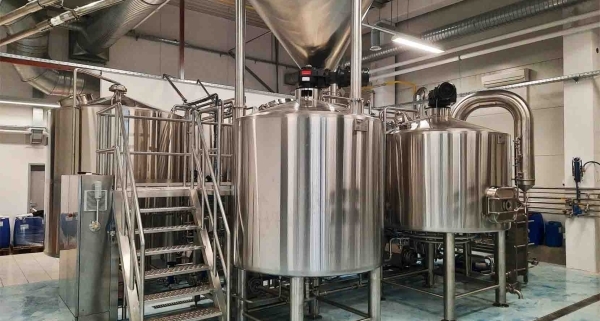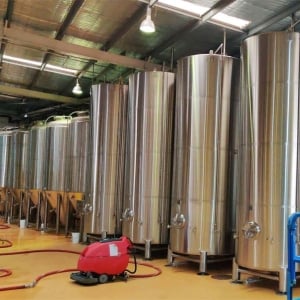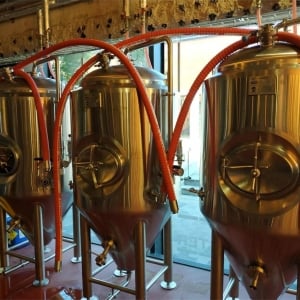Craft Fermenter
Overview of Craft Fermenters
Craft fermenters are essential for brewing enthusiasts who want to create their own beer, cider, or other fermented beverages at home or on a small commercial scale. These vessels allow for the controlled fermentation of liquids, transforming sugars into alcohol and developing the flavors that define your brew. In this comprehensive guide, we’ll delve into everything you need to know about craft fermenters, from the equipment itself to the brewing process, and even how to choose the right supplier.
Understanding Craft Fermenters
Craft fermenters come in various shapes, sizes, and materials, each with specific features that can influence the brewing process. Whether you are a hobbyist or running a small brewery, the choice of fermenter can significantly impact the quality of your final product.
Types of Craft Fermenters
Craft fermenters can be broadly categorized based on their design and material. Let’s explore these in detail.
Material-Based Types:
- Stainless Steel Fermenters: Durable, easy to clean, and resistant to contamination. Ideal for consistent and professional results.
- Plastic Fermenters: Lightweight, affordable, and suitable for beginners but can retain odors and stains.
- Glass Fermenters: Offer clear visibility of the fermentation process, but are fragile and heavier.
- Conical Fermenters: Feature a cone-shaped bottom that allows for easy separation of sediment, making them popular among serious brewers.
Design-Based Types:
- Open Fermenters: Allow for exposure to air, commonly used in traditional brewing methods for specific styles like lambic beers.
- Closed Fermenters: Sealed to prevent contamination, often equipped with airlocks or blow-off tubes to manage gas release.

Detailed Equipment Guide
Choosing the right fermenter depends on various factors including your brewing goals, budget, and available space. Here’s a comprehensive guide to help you make an informed decision.
Features of Craft Fermenters:
Craft fermenters come with a range of features designed to facilitate the brewing process. Here’s what you need to know:
- Capacity: Typically ranges from a few gallons for home brewers to several barrels for small-scale commercial operations.
- Design: Includes features like conical bottoms, built-in thermometers, and pressure gauges.
- Materials: Stainless steel, plastic, and glass each offer distinct advantages and disadvantages.
- Layout: Ergonomic designs that facilitate easy access, cleaning, and maintenance.
- Customization: Options for adding accessories like heating and cooling jackets, pressure relief valves, and sampling ports.
Comparison of Fermenter Types:
| Feature | Stainless Steel Fermenter | Plastic Fermenter | Glass Fermenter | Conical Fermenter |
|---|---|---|---|---|
| Durability | High | Medium | Low | High |
| Ease of Cleaning | High | Medium | High | High |
| Contamination Risk | Low | Medium | Low | Low |
| Cost | High | Low | Medium | High |
| Weight | Heavy | Light | Heavy | Heavy |
| Visibility | None | Low | High | Low |
The Brewing Process Using Craft Fermenters
Craft fermenters play a crucial role in the brewing process, which involves several stages:
- Sanitization: Properly clean and sanitize the fermenter to prevent contamination.
- Wort Transfer: After boiling the wort, transfer it to the fermenter.
- Pitching Yeast: Add yeast to initiate fermentation.
- Fermentation: Monitor temperature and other parameters to ensure proper fermentation.
- Secondary Fermentation (Optional): Transfer the brew to another vessel for further aging and clarification.
- Packaging: Once fermentation is complete, package your brew for consumption.
Key Steps in the Brewing Process:
- Preparation: Ensure all equipment is sanitized.
- Primary Fermentation: Maintain consistent temperature and monitor progress.
- Secondary Fermentation: (Optional) Transfer to another fermenter to improve clarity and flavor.
- Bottling/Kegging: Transfer the finished brew into bottles or kegs for carbonation and storage.
Capacity, Space, Design, and Customization Options
Choosing the right fermenter involves considering capacity, space requirements, and potential customization options. Here’s a detailed look:
| Feature | Description |
|---|---|
| Capacity | Ranges from 1 gallon for small batches to 100+ gallons for larger operations. |
| Space Requirements | Depends on the size of the fermenter and the available brewing space. |
| Design | Includes ergonomic handles, sampling ports, and conical bottoms for ease of use. |
| Customization | Options for heating and cooling systems, pressure relief valves, and more. |
Suppliers and Price Range
Finding the right supplier is crucial for obtaining high-quality fermenters at a reasonable price. Here’s a guide to help you navigate the options:
| Supplier | Price Range | Notable Features |
|---|---|---|
| Blichmann Engineering | $300 – $2,500 | High-quality stainless steel, customizable options. |
| FastFerment | $70 – $200 | Affordable conical fermenters, easy to use. |
| MoreBeer! | $50 – $1,500 | Wide range of materials and capacities. |
| SS Brewtech | $150 – $2,000 | Professional-grade stainless steel, advanced features. |
Installation, Operation, and Maintenance
Proper installation, operation, and maintenance of your craft fermenter are essential for ensuring a successful brewing process and longevity of the equipment.
| Aspect | Details |
|---|---|
| Installation | Ensure a clean, level surface; secure all connections; calibrate instruments if necessary. |
| Operation | Follow manufacturer guidelines; monitor temperature and pressure; avoid overfilling. |
| Maintenance | Regular cleaning and sanitization; inspect seals and gaskets; replace worn-out parts. |
Choosing the Right Supplier
Selecting the right supplier involves evaluating several factors including reputation, product quality, customer support, and price. Here’s how to make an informed choice:
| Factor | Considerations |
|---|---|
| Reputation | Look for reviews and testimonials from other brewers. |
| Product Quality | Assess the material, build quality, and features of the fermenters. |
| Customer Support | Ensure the supplier offers robust after-sales support and warranties. |
| Price | Compare prices across different suppliers to find the best value. |

Advantages and Limitations of Different Craft Fermenters
Each type of fermenter has its pros and cons. Here’s a comparative analysis:
| Fermenter Type | Advantages | Limitations |
|---|---|---|
| Stainless Steel | Durable, easy to clean, professional quality | Expensive, heavy |
| Plastic | Affordable, lightweight, easy to handle | Prone to scratching, can retain odors |
| Glass | Excellent visibility, non-porous | Fragile, heavy |
| Conical | Easy sediment removal, versatile | Higher cost, complex design |
FAQs
What is the best material for a craft fermenter?
Stainless steel is often considered the best due to its durability and ease of cleaning.
How do I maintain my craft fermenter?
Regular cleaning and sanitization, inspecting seals, and replacing worn parts are essential.
Can I use a plastic fermenter for high-alcohol brews?
Yes, but be cautious of potential staining and odor retention.
What size fermenter do I need?
Depends on your batch size. For home brewing, 5-10 gallon fermenters are common.












 12HL brewery setup
12HL brewery setup